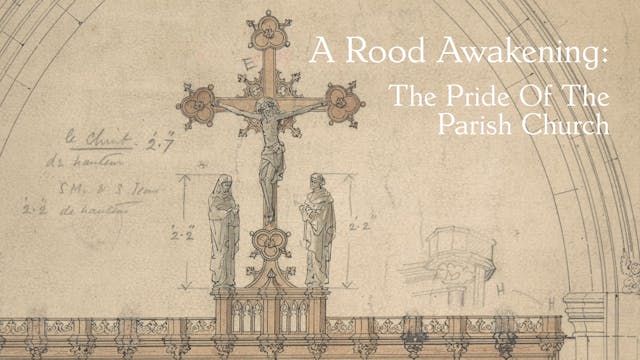To Show That The Place Is Divine: Consecration Crosses In English Churches
The Middle Ages
•
1h 9m
Consecration crosses can be seen in a number of medieval places of worship, including those belonging to the Churches Conservation Trust. Usually painted on the interior walls of a church, these white discs with a red cross in the centre signified to the congregation that the building was a sacred place, set apart from the rest of the world. Drawing on surviving examples from across the country, this presentation will explore the variety of consecration crosses. It will consider the concepts and rituals that lay behind these markers of holiness and the implications that this had for how medieval churches were regarded and used. The sanctity of places of worship was challenged and rejected during the course of the English Reformation. Amidst the reordering of churches in accordance with the new Protestant aesthetic many consecration crosses, together with wall paintings, disappeared under layers of whitewash. Those that remain serve as a visible reminder of the attitudes and beliefs of patrons, congregations, as well as the ecclesiastical establishment, of the sanctity and significance of these church buildings from time of their foundation.
Andrew Spicer researches the impact of the Reformation on places of worship across early modern Europe with a particular interest in iconoclasm, church architecture, the material culture of worship and liturgical furnishings, as well as rites of consecration and sacred space. He is Professor of Early Modern European History at Oxford Brookes University and his publications include Calvinist Churches in Early Modern Europe (2007) and the edited volumes Lutheran Churches in Early Modern Europe (2012) and Parish Churches in the Early Modern World (2016).
Up Next in The Middle Ages
-
Meeting Vikings In English Churches
In this talk we will explore some of the different ways you might come across Vikings while visiting English medieval churches. Today we might think of the Vikings mostly as raiders and pillagers of churches, but the real story is more complex than that: there are also churches across England whi...
-
Saint Oswald’s Many Heads: The Life &...
King Oswald was a Christian king of Northumbria who died in battle in 642, and was soon recognised as a saint. He was slain by the Mercian king Penda, who cut off Oswald's head and impaled it on a stake on the battlefield as a sign of his victory. By the end of the Middle Ages 4 different religio...
-
A Rood Awakening: The Pride Of The Pa...
Join us on a historical tour exploring how and why Rood Screens came to be built that separated the congregation from the priests in parish churches. Through illustrated examples, some of the care and attention devoted to embellishing these screens by the parish congregations will be revealed. Fi...



